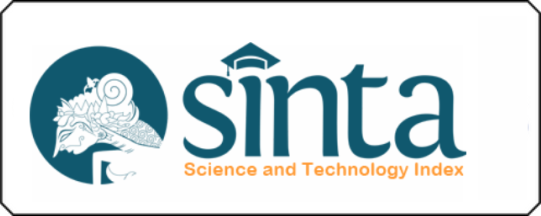The Influence of Hoaxes on Religious Harmony in Digital Era
Keywords:
Hoax, Interfaith harmony, Social media, Digital era, Qualitative, LinearAbstract
The spread of hoaxes through social media in the digital era is increasingly worrying, especially hoaxes related to religious issues. This type of hoax has the potential to trigger conflict and disrupt religious harmony, especially in a country with religious diversity like Indonesia. This study aims to measure the influence of the spread of hoaxes on religious harmony in the digital era using a qualitative approach. Data was collected from online sources and social media to analyze the types of hoaxes circulating and their impact on society and the data was analyzed using linear regression statistical methods. The results of the study showed that there was a significant negative correlation between exposure to hoaxes and religious harmony, the more often someone was exposed to hoaxes, the lower the level of interfaith harmony they felt.This study concludes that hoaxes have a significant impact on religious harmony in the digital era and the spread of hoaxes through social media needs to be controlled to maintain social harmony. Recommendations from this study include increasing digital literacy among the public and stricter supervision of the spread of false information on social media.
References
Allcott, H., & Gentzkow, M. (2017). Social media and fake news in the 2016 election. Journal of Economic Perspectives, 31(2), 211–236. https://doi.org/10.1257/jep.31.2.211
Benkler, Y., Faris, R., & Roberts, H. (2018). Network Propaganda: Manipulation, Disinformation, and Radicalization in American Politics - Oxford Scholarship. Oxford University Press. https://oxford.universitypressscholarship.com//mobile/view/10.1093/oso/9780190923624.001.0001/oso-9780190923624
Beyondintractability, O. (2016). Religion and Conflict: Analyzing the Role of Religious Divides in Societal Disintegration.
Creswell, J. W., & Clark, V. L. P. (2011). Choosing a mixed methods design. In Designing and Conducting Mixed Methods Research (pp. 53–106). Sage Publications, Inc.
Darwish, A., & Lakhtaria, K. I. (2011). The Impact of the New Web 2.0 Technologies in Communication, Development, and Revolutions of Societies. Journal of Advances in Information Technology, 2(4), 204–216. https://doi.org/10.4304/jait.2.4.204-216
Denzin, N. K., & Lincoln, Y. S. (2011). The Sage handbook of qualitative research. sage.
Fardiah, D., Darmawan, F., Rinawati, R., Wira Cholifah, Y., & Ibrahim Abdullah, S. (2023). The Impact of Hoax Educational Content on Instagram in Improving People’s Digital Literacy Skills. KnE Social Sciences. https://doi.org/10.18502/kss.v8i18.14332
Farkas, J., & Schou, J. (2018). *Fake News: A Roadmap for Engaging Research and Practice. Media, Culture & Society, 40, 1318–1324.
Fatmawati, S., Salzabila, R., & Rizkitama, G. A. (2020). Hoax Analysis on Social Media Corpus to Develop “Kapak Hoaks (Hoax Axe)” Model: A Study on Critical Discourse Analysis. E-Structural, 3(01), 69–81. https://doi.org/10.33633/es.v3i01.4094
Fuad, J. (2021). Preventing Hoax Issues on Social Media Using the Concept of Media Literacy. Jurnal Fuad.
Hafid, F., & Yaldi, I. (2022). The Impact of Hoaxes on Social and Political Cohesion in Indonesia.
Haryatmoko, M. (2019). Hoaks dan kerukunan umat beragama: Dampak penyebaran informasi palsu di media sosial. Jurnal Komunikasi Dan Pembangunan.
Kuntarto, Widyaningsih, R., & Chamadi, M. R. (2021). the Hoax of Sara (Tribe, Religion, Race, and Intergroup) As a Threat To the Ideology of Pancasila Resilience. Jurnal Ilmiah Peuradeun, 9(2), 413–434. https://doi.org/10.26811/peuradeun.v9i2.539
Manik, B. A., Nugroho, K., & Budi H, D. W. (2024). Christian faith and multiculturalism in Indonesia: an effort to develop harmony based on religion. JPPI (Jurnal Penelitian Pendidikan Indonesia), 10(2), 348. https://doi.org/10.29210/020242762
Manyika, J., Lund, S., Bughin, J., Woetzel, J., Stamenov, K., & Dhringra, D. (2016). Digital Globalization : The New Era of Global Flows. McKinsey Global Institute, March, 134. https://www.mckinsey.de/sites/mck_files/files/mgi_digital_globalization.pdf
Mcnair, B. (2017). Media dan komunikasi di era digital: Analisis terhadap penyebaran hoaks. Jurnal Komunikasi Politik.
Mcquail, D. (2010). Media massa dan opini publik: Pengaruh penyebaran informasi. Jurnal Studi Media.
Mihailidis, P. (2018). Media Literacy in a Post-Truth World: The Role of Media Educators in Promoting Critical Thinking and Engagement. *Journal of Media Literacy Education*, 10(2), 1–12.
Muhid, A., Hadi, M., Fanani, A., Arifin, A., & Hanif, A. (2019). The Effect of Hate Speech Exposure on Religious Intolerance Among Indonesian Muslim Teenagers. In Proceedings of the 2019 Ahmad Dahlan International Conference Series on Education & Learning, Social Science & Humanities (ADICS-ELSSH 2019). Atlantis Press. https://doi.org/10.2991/adics-elssh-19.2019.31
Pomerantz, F. (2021). The Role of Misinformation in Shaping Religious Beliefs: Specific Interventions. *Journal of Religion and Society*, 23, 1–15.
Reza, I. F. (2021). Counteracting Hoax in Social Media Through Tabayyun By Islamic Student Community. Ta’dib, 24(2), 269. https://doi.org/10.31958/jt.v24i2.4740
Ricklefs, M. C. (2012). Sejarah agama di Indonesia: Tantangan dan peluang kerukunan umat beragama. Jurnal Sejarah Dan Budaya.
S, S. Q., & Fauzi, A. M. (2022). The Role of Religious Leaders and the Regional Government of East Java in Tackling Hoax Chain Message. In Proceedings of the International Joint Conference on Arts and Humanities 2021 (IJCAH 2021) (Vol. 618). Atlantis Press. https://doi.org/10.2991/assehr.k.211223.137
Saldaña, J. (2018). Researcher, Analyze Thyself. International Journal of Qualitative Methods, 17(1), 1609406918801717. https://doi.org/10.1177/1609406918801717
Saldaña, J. . & O. M. (2021). Qualitative Research: Analyzing Life. . In Sage Publications. Sage Publications.
Sari, A. P. I. (2022). The Challenges of Religious Harmony and Tolerance in Developing Countries. Contemporary Issues on Interfaith Law and Society, 1(2), 183–202. https://doi.org/10.15294/ciils.v1i2.59060
Shu, K., Sliva, A., Wang, S., Tang, J., & Liu, H. (2017). Fake News Detection on Social Media. ACM SIGKDD Explorations Newsletter, 19(1), 22–36. https://doi.org/10.1145/3137597.3137600
Smith, A. (2015). Interreligious Conflicts in Post-Authoritarian Indonesia. ScholarHub Publishing.
Sommariva, S., Vamos, C., Mantzarlis, A., Đào, L. U. L., & Martinez Tyson, D. (2018). Spreading the (Fake) News: Exploring Health Messages on Social Media and the Implications for Health Professionals Using a Case Study. American Journal of Health Education, 49(4), 246–255. https://doi.org/10.1080/19325037.2018.1473178
Sultan. (2020). The Phenomenon of Hoax Narrative Among Religious Campuses: Anthropolinguistic Study. In Proceedings of the 2nd International Conference on Islam, Science and Technology (ICONIST 2019). Atlantis Press. https://doi.org/10.2991/assehr.k.200220.027
Sunstein, C. R. (2009). Echo chambers dan dampaknya terhadap masyarakat. Jurnal Pemikiran Sosia.
Vanderford, H., Kelsey, M., & Agree, E. (2019). Addressing Misinformation in Religious Contexts: Strategies for Education and Community Engagement. *Religious Education*, 114(3), 276–291.
Wardle, C., & Derakhshan, H. (2017). Penyebaran hoaks dan disinformasi di era digital: Sebuah kajian. Jurnal Komunikasi Digital.
Watson, A. (2024). Statistics & Facts about Fake News | Statista. In Statista. https://www.statista.com/topics/3251/fake-news/#dossier-chapter2
Yin, R. K. (2018). Case study research and applications. Sage Thousand Oaks, CA.
Downloads
Published
Issue
Section
License
Copyright (c) 2024 Putri Indriani, Fitri Divanda, Adelia Safutri, Fiki Ardiansyah, Fauzan Mubarak, Kuntum Nabila Faisal, Vina Putriyani Padila (Author)

This work is licensed under a Creative Commons Attribution 4.0 International License.



























